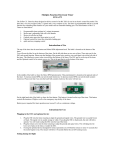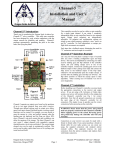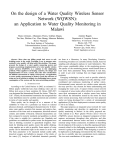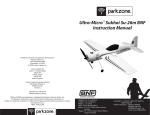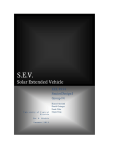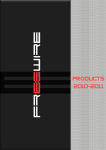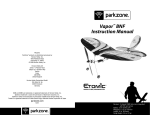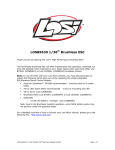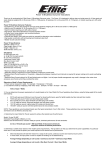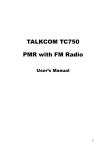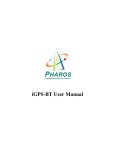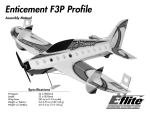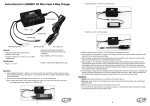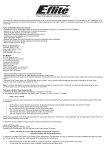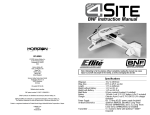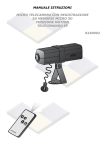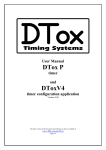Download 25-Amp Pro Brushless ESC Manual - E
Transcript
Servo Ratings with BEC Enabled: Cells High Torque Servos 6 - 8 Ni-Cd/Ni-MH 9 - 10 Ni-Cd/Ni-MH 2 Li-Po 3 Li-Po 25-Amp Pro Brushless ESC Instructions Thank you for purchasing the E-flite® 25-Amp Pro Brushless ESC. This controller has been designed for use in radio control aircraft and to support continuous currents of up to 25 amps when using 2-3 cell Li-Po battery packs and up to four sub-micro servos. The ESC features a lightweight plastic case, with exposed, finned heat sinks for both the motor drive mosfets, and unlike many controllers, the BEC regulators give you a more reliable and powerful power supply for your servos. • Up to 25 amps continuous current with proper air flow • Finned heat sinks for both the motor drive mosfets and dual BEC regulators to support up to 4 sub-micro servos • Programmable motor braking • Safe power-arm mode prevents accidental starts • Programmable low voltage cut-off with settings for 2-cell Li-Po (6V), 3-cell Li-Po (9V) or 70% of battery starting voltage • Programmable throttle input range (1.1ms-1.9ms or Auto Select) • Soft start • Auto motor shut down if signal is lost or there is interference • Programmable timing—2 user selectable ranges for use with a large variety of brushless motors • Pre-wired connectors—E-flite EC3 on battery input and 3.5mm female gold bullets on motor output leads Continuous Current: Max Burst Current: Length: Width: Height: Weight: Cells: Battery Input Leads: Motor Output Leads: 4 3 4 3 Sub-Micro Servos 4** 4** 4** 4** ** Sub-Micro Servos tested 4 at a time include E-Flite S-60, and S-75, JR 241, and ParkZone 3W servo. Some other brands of servos have significantly higher current draw. Digital sub-micro servos, micro, and mini-servos have higher current draw, use the 'standard servos' column. Always be sure to position the ESC for maximum airflow since cooling can significantly aid in the performance of the BEC. 25A 30A (15 sec) 48mm (1.9 in) 28mm (1.1 in) 11mm (.4 in) 32 g (1.2 oz) 2-3S Li-Po or 6-10 Ni-MH/Ni-Cd 16 AWG with E-flite EC3 Connector 16 AWG with 3.5mm Female Gold Bullet Connectors the ESC, battery, and motor after each flight. You may want to consider letting the electronic components cool to near ambient temperature between flights. We also recommend throttle management when running near maximum levels of current draw. It is not recommended you fly an entire flight at full throttle. If this is done, it is possible to cause permanent damage to your motor, battery, and ESC. Using the 25-Amp Pro Brushless Controller Before first use, please refer to the above chart for BEC usage and input voltage/cell count guidelines. You must follow these guidelines for safe operation. If you are using four servos with higher current draw, or more than four servos for a quad flap option (for example), you will need to disable the BEC. If you wish to disable the BEC, you must remove the red receiver wire lead and connector from the receiver lead housing, and then insulate it properly to prevent shorting. This controller is very simple to use, and for safety, will not arm the motor until the throttle stick has been held in the Idle/Off position for more than 1 second. The controller will indicate the soft cut-off voltage setting every time you plug the battery in by first emitting a low, long tone, to show startup. You will then hear 2 (for 2-cell Li-Po) or 3 (for 3-cell Li-Po) medium length, mid tones to indicate the cell count (or 7 beeps if 70% Smart Cut is selected), helping you to confirm the setting before every flight. When operating with the BEC disabled, E-flite recommends the use of a separate, high power, external, BEC (like the Ultimate BEC), or receiver pack and switch using the following items to ensure trouble-free operation: Connecting the ESC to the Motor 1. Expert 720mAh Ni-MH 4.8V receiver battery (EXRB100), or similar 2. Expert Standard Switch (EXRA050), or similar PLEASE READ THESE INSTRUCTIONS IN THEIR ENTIRETY BEFORE USE Features: Specifications: 3 2 3 2 Standard Servos The three wires from your motor connect to the three female gold bullet connectors on the ESC. The order of connection to the motor is not important; you can plug any motor wire into any connector. If, when you test the system, the motor runs backwards, you can simply unplug and switch any two of the motor wire plugs connected to the ESC. Mounting the ESC Choose a location that has good airflow and offers good protection. Before you connect your ESC and begin flying, take a moment to look it over. The input power side has a black (negative) and red (positive) wire along with an E-flite EC3 Male Device Connector. The motor side has three, 3.5mm female gold bullet connectors. The black and red wires with the EC3 DEVice (DEV) Connector will connect to your power battery. The red wire connects to the red wire on your battery pack, the black wire connects to the black wire on your battery pack. If the wires are reversed, the ESC may be damaged. YOU MUST ENSURE THAT YOU CONNECT THE BATTERY POLARITY PROPERLY TO PREVENT DAMAGE TO THE ESC. Reversing polarity will void your warranty, so always double-check this connection. You may need to solder an E-flite EC3 Female Battery (BATT) Connector (EFLAEC302) to the battery so it matches this speed control. The throttle lead connects to the throttle channel on your radio receiver. WARNING: For your safety, when checking the startup function of the ESC or making programming changes, please remove the propeller to prevent any potential injury. You should always treat the motor and propeller as live and dangerous, remembering it could start at any time, and keep any body parts, clothing and tools clear of the propeller arc. NEVER LEAVE THE BATTERY CONNECTED WHEN NOT FLYING THE AIRCRAFT AND ALWAYS REMOVE THE BATTERY FROM THE MODEL BEFORE CHARGING AND WHEN FINISHED FLYING. When flying in hot weather, we recommend checking on the condition of The plastic case area next to the small BEC heat sink is designed to accept Velcro® or 2-sided tape. Do not cover the heat sinks as this will greatly reduce their effectiveness. Mount the ESC with a combination of Velcro®, 2-sided foam tape, and/or tie wraps. Starting Your Power System 1. Turn on your transmitter and ensure the position of the throttle stick is set to Idle/Off. 2. Plug in the flight pack to the controller and listen for the tones to indicate voltage cut-off. 3. After the controller has indicated the cell count, you will here a series of 3 medium length rising tones to indicate the controller is armed, and ready to fly. 4. When you move the throttle stick upward, the motor will run. If you continue to move the throttle stick upward to Full throttle (high position), the motor will run faster. If you lower the throttle stick below the start-up position, the motor will stop running. 5. Check servo motion as part of your preflight check. It is very important you make sure linkages are free-moving with no binding. (continued on back) (continued) Entering the Programming Mode 1. With the battery disconnected from the controller, and the transmitter turned on, first move the throttle stick to full throttle (>1.7ms) position. Leave it in this position and then connect the battery to the controller. 2. Wait for 5 seconds, and the ESC will give two sets of fast ringing tones to indicate you have successfully entered the programming mode. 3. Once you hear these tones, move the stick to center (between 1.4 and 1.6ms), and the controller will beep 1 time, this indicates menu item 1. 4. The controller will now wait 5 seconds for you to make your selection; your programming options are either full throttle (>1.7ms), or idle (<1.3ms). 5. When you have made a valid selection, the control will beep once with a lower tone, and you can move the stick back to center for the next menu item (2 beeps, 3 beeps and so on). If you do not make a selection within 5 seconds, the controller will move to the next menu item. 6. Please note that if you do not need to program every menu item, you can simply exit the programming mode after you have made the required selections. You can do this by moving the throttle stick straight to idle after making your selection, or leaving it in the idle position if you made a no selection (for approximately 8 seconds) until you hear one set of 3 medium length rising tones that indicate the controller has armed the motor, or by simply unplugging the battery. Remember, when in the programming mode: Full Throttle = Stick Up Idle = Stick Down You will know your battery pack has reached soft auto cut-off when you hear the motor “pulse” repeatedly. We recommend you land your model as soon as you hear the motor pulse (indicating the pack voltage has dropped to the cut-off voltage level) to prevent over-discharge of the Li-Po battery pack, and to prevent sudden power loss. Programming Menu 2 – Braking This option gives you the choice to have the ESC stop the propeller during flight (brake on) or allow it to windmill (brake off). Use the brake on option for gliders. 1. Brake Off – Full Throttle (>1.7ms) 2. Brake On – Idle (<1.3ms) Programming Menu 3 – Timing Please refer to your motor instructions and specifications for an indication of the number of poles. 1. 4-pole and greater motors timing mode – Full Throttle 2. 2-pole motors timing mode – Idle Programming Menu 4 – Throttle Input Range This option allows for proper operation of the ESC with many different radios on the market. Most radios, and all the computer radios we have tested, will work well with the auto set option, but some radios have a wider output range, and may give a more linear response with the 1.1 to 1.9ms range. If you feel there is too much “dead” area in the stick movement near Full Throttle, try adjusting the end points in your radio, or change to the wider input range. Be aware that if these settings are not correct, it may be impossible to arm the controller. If this happens, return the input range setting to the default auto learning setting. The default settings (from the package) for your E-flite 25-Amp Pro ESC are as follows: • 3S (9V) auto cut-off for Li-Po • Brake Off • 4 pole and greater timing (outrunner or 6-pole motors) • Throttle input range set to Auto Select mode (1.2ms-1.8ms) The auto setting option learns the minimum position of your throttle (between 1.1 and 1.3ms) and stores this value at each startup, and then adds a value of 0.6ms for the full throttle setting. Programming Menu 1 – Voltage Cut-off Error Codes Use this option to set the voltage at which the controller will shut down the motor to prevent damage to your battery, when it reaches the cut-off voltage. You will know your battery pack has reached auto cut-off when you hear the motor “pulse” repeatedly. 1. 3S Li-Po voltage cut-off – Full Throttle 2. 2S Li-Po or Ni-Cd/Ni-MH voltage cut-off – Idle 3. 70% Smart Cut soft cut-off (See below for Smart Cut information) NOTE: To access the 70% Smart Cut option, leave the stick at full throttle for 7 seconds while in menu item 1, until 7 beeps are heard, then continue through the program normally. This option will activate the soft cut-off at 70% of startup voltage. For example, if your pack measures 10.0 volts at startup, then the soft cut will occur at 7.0 volts. The Smart Cut option will check the startup voltage every time you plug the battery into the controller, so beware of using partially charged packs, as the system cannot protect your Li-Po batteries if you are using Smart Cut and connect a partially charged pack. 1. Throttle Range 1.1ms to 1.9ms – Full Throttle 2. Auto Select – Idle The controller will beep continuously if the input voltage is below the cut voltage (beep...beep...beep) when the battery is connected. Check the voltage of the battery pack to see if it is correct, or the programmed cut-off setting if the input voltage is set incorrectly for the voltage of the pack being used. If you have trouble arming the controller (and the throttle trim has been set to minimum), enter the programming mode and try the auto setting in Programming Menu 4 to see if it helps correct your problem. If it is a computer radio, you may alternatively increase your high and low throttle ATV (endpoint) percentages. Some systems including many Futaba systems may require the throttle channel to be “reversed” for proper operation. Limited Warranty Period Horizon Hobby, Inc. guarantees this product to be free from defects in both material and workmanship for a period of 1 year from the date of purchase. Limited Warranty & Limits of Liability Pursuant to this Limited Warranty, Horizon Hobby, Inc. will, at its option, (i) repair or (ii) replace, any product determined by Horizon Hobby, Inc. to be defective. In the event of a defect, these are your exclusive remedies. This warranty does not cover cosmetic damage or damage due to acts of God, accident, misuse, abuse, negligence, commercial use, or modification of, or to any part of the Product. This warranty does not cover damage due to improper installation, operation, maintenance, or attempted repair by anyone other than an authorized Horizon Hobby, Inc. service center. This warranty is limited to the original purchaser and is not transferable. In no case shall Horizon Hobby’s liability exceed the original cost of the purchased product and will not cover consequential, incidental or collateral damage. Horizon Hobby, Inc. reserves the right to inspect any and all equipment involved in a warranty claim. Repair or replacement decisions are at the sole discretion of Horizon Hobby, Inc. Further, Horizon Hobby reserves the right to change or modify this warranty without notice. REPAIR OR REPLACEMENT AS PROVIDED UNDER THIS WARRANTY IS THE EXCLUSIVE REMEDY OF THE CONSUMER. HORIZON HOBBY, INC. SHALL NOT BE LIABLE FOR ANY INCIDENTAL OR CONSEQUENTIAL DAMAGES. As Horizon Hobby, Inc. has no control over use, setup, final assembly, modification or misuse, no liability shall be assumed nor accepted for any resulting damage or injury. By the act of use, setup or assembly, the user accepts all resulting liability. If you as the purchaser or user are not prepared to accept the liability associated with the use of this product, you are advised to return this product immediately in new and unused condition to the place of purchase. Safety Precautions This is a sophisticated hobby product and not a toy. It must be operated with caution and common sense and requires some basic mechanical ability. Failure to operate this product in a safe and responsible manner could result in injury or damage to the product or other property. This product is not intended for use by children without direct adult supervision. For complete and specific information concerning the Limited Warranty, Limits of Liability, and Safety Precautions – please refer to our web-page for this item or contact your E-flite distributor. You can also direct emails to [email protected], or in the U.S., call 877.504.0233 toll free to speak to a service technician. © 2006 Horizon Hobby, Inc. www.horizonhobby.com www.E-fliteRC.com E-flite® is an exclusive brand of Horizon Hobby, Inc. Made in China 9247


